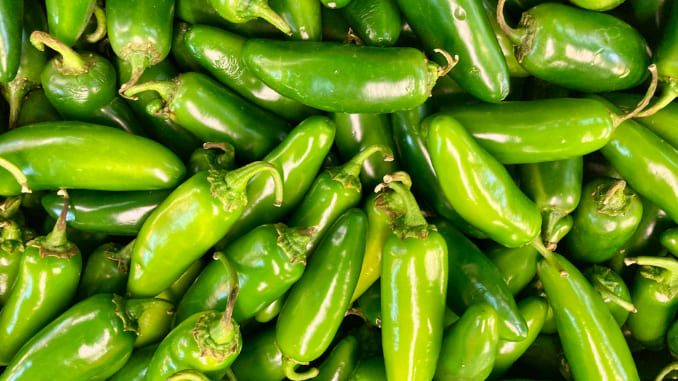
The first time I ever bit into a jalapeño, convinced the diced green peppers in the self-serve taco spread were bell peppers, it felt like my tongue had been stung by some sort of vegetal-tasting insect. The heat was so pronounced, so intense, that I began to cry until my parents coaxed me to drink a glass of milk. In the years since, I’ve grown to love spicy food, always opting for the habanero-spiked or Sichuan-style items on a menu over their milder counterparts. Still, jalapeños aren’t my favorite—but these days, that’s often because they’re not spicy enough.
I wondered if my taste buds had just been more sensitive when I was younger, that my lack of experience with spicy foods caused me to enter a mild state of shock upon that first taste of jalapeño. Maybe as I had grown more accustomed to heat, jalapeños had seemingly become lacking on the spice front, rendering their effects less potent to my older, less spice-sensitive palate.
But it turns out that jalapeños really aren’t as spicy as they once were. According to a recently resurfaced article in D Magazine, it’s not a coincidence that this is happening, either. Instead, it all comes down to selective breeding and—of course—the pressures of the commercial market. Because although we think of jalapeños as something we’d find in the produce aisle, the reality is that most of the world’s jalapeños are destined to end up in some sort of packaged product, not in a fresh homemade salsa.
The problem is that these packaged products have to maintain some sort of consistency when it comes to heat levels. Jalapeños traditionally offered varying degrees of spiciness depending on each individual pepper, so it would be very difficult to tell just how hot any specific pepper was going to be. As you can imagine, this would make labeling “mild,” “medium,” and “hot” salsas and other products quite difficult. So, through a selective breeding process, scientists at Texas A&M University developed the TAM II, a low-heat jalapeño variety that still offered the fresh, green flavor the pepper is known for without packing quite as intense a punch. Then, if food producers want to make a product spicier, they just add oleoresin capsicum, a pepper extract that adds spiciness.
Of course, jalapeños aren’t really special in this sense. Last year, I wrote about how Brussels sprouts are becoming less bitter thanks to a similar process. But something about reducing the heat in such a beloved ingredient for the sake of making it milder and more commercially viable feels wrong. Although crops like peppers, tomatoes and corn used to vary depending on where they were grown and the specific conditions they were bred for, our vastly less-varied produce options today are often prioritized for the economic benefits they provide—not for better, more interesting or complex flavors. Even if you’re not a fan of spicy food and the dampening of jalapeño heat doesn’t bother you, it’s clear that the homogenization of our produce doesn’t necessarily offer us a richer, more flavorful life.
Although we mourn the spice of jalapeños past, there are other, hotter peppers out there to use in your cooking. Many compare serranos to similar-looking jalapeños; they are noticeably spicier, but the flavor profile isn’t too dissimilar. Fresno peppers can also be a good replacement in your favorite jalapeño-centric recipes. But whether you start cooking with different peppers or just decide to add a dash of hot sauce to your standard salsa recipe, we can always remember the jalapeños of our past fondly.
Samantha Maxwell is a food writer and editor based in Boston. Follow her on Twitter at @samseating.